Samsung Galaxy S6
The Samsung Galaxy S6 is probably the most important Galaxy phone since the S2, and it’s also one of the best. For years, Samsung would give us the same blend of plastic and faux leather – and when you put them alongside the latest iPhone or HTC flagship, they looked a bit, well rubbish. But that all changed with the Galaxy S6.
Clad in a svelte blend of metal and glass, the Samsung Galaxy S6 got a huge injection of premium feel, – and the design was so good, Samsung left it largely unchanged for the later Samsung Galaxy S7.
So that Galaxy S6 might not be the newest smartphone on the block right now, but because it’s nearly two years old, you can find some great deals on the former flagship. It was very powerful at the time of its release, so still compares favourably to mid range phones in 2017, and because it looks so similar to the Samsung Galaxy S7, it doesn’t look that dated either.
So, want to invest in a Samsung Galaxy S6? Here you’ll find the best deals on Samsung’s former flagship, and after that, the Samsung Galaxy S6 review, too.
Best Samsung Galaxy S6 deals
Vodafone: £20, 500 UK minutes, 500mb of data, unlimited texts, £free upfront - BUY
Three: £23, 300 minutes, 500mb of data, unlimited texts, £8.99 upfront - BUY
Samsung Galaxy S6 review
The Galaxy S6 is a big improvement on the S5, with the glass and metal design bringing the phone up to the quality we think its price demands. That's not to say that everything is perfect: as much as we love the phone's metal design, its smooth, rounded corners make it feel extremely slippery to hold, and it constantly felt like it was about to fall out of our hand.
It doesn't help that the S6 has a glass back either, as this provides very little purchase when you're using the phone single-handed. The S6 Edge, on the other hand, skirts around this issue by having a thinner, more angular frame to accommodate its curved screen, making it much easier and more comfortable to grip. We never thought we'd miss Samsung's faux-leather back panels, but we did like the amount grip they provided.
The phone's rounded edges also have the strange effect of making the S6 appear considerably fatter in your hand compared to the S6 Edge, despite the fact the S6 is actually 0.2mm slimmer, measuring 6.8mm compared to the 7mm on the Edge. It's a minor quibble, but it nevertheless serves as a reminder that the S6 Edge feels like the more premium product.
There's not much in it in terms of weight, as the S6 weighs 138g while the S6 Edge weighs 132g. Either way, both trump the HTC One M9 and LG G4, as the One M9 measures 9.6mm thick and weighs a heftier 157g while the G4 measures 8.9mm and weighs 155g. Some will no doubt prefer the added bulk of the One M9 and G4, particularly if you're a little nervous about dropping it, but the S6 definitely feels more comfortable in your pocket.
Samsung Galaxy S6 review: Display
Fortunately, the S6 makes up for its small design issues with its stunning 5.1in Super AMOLED display. With a resolution of 2,560x1,440, the phone has the highest pixel density (577ppi) of any handset, beating the LG G3, which has the same resolution and a larger 5.5in screen.
As we've come to expect from Samsung's AMOLED displays, colour accuracy and contrast were through the roof, as our colour calibrator returned an sRGB colour gamut score of 100% and a contrast ratio of Infinity:1. Likewise, blacks were a perfect 0.00cd/m2, so text and black backgrounds are as deep and inky as they come.
Screen brightness was a rather more contentious issue, as Samsung claims the screen can reach as high as 600cd/m2, which is higher than even most LCD screens are capable of producing. The HTC One M9, for instance, managed just 478.50cd/m2 on its highest brightness setting. AMOLED screens, on the other hand, are usually much dimmer, and our usual maximum brightness tests were very much in line with what we'd normally expect to see from this type of screen technology.
Here, we measured a peak brightness of 346.49cd/m2, which is nigh on identical to our readings from the S6 Edge. This is fine for using the phone outside, but it still pales in comparison to what an LCD can achieve. However, it seems Samsung has finally addressed this issue of outdoor usability, as our live brightness readings shot up to a massive 577cd/m2 when we took the phone outside and switched back to automatic brightness.
This is the first time we've seen this kind of brightness level on an AMOLED phone, and it really helps boost the clarity of the screen and keeps colours looking punchy when you're out and about. This will be good news for anyone who travels a lot or primarily uses their phone outside, as it effectively combines the best features of both AMOLED and LCD screen technology. We like that it's only available on Auto mode as well, as this should help keep the screen's power drain in check so you don't end up running out of battery so often.
Samsung Galaxy S6 review: Android 6.0 and TouchWiz
Samsung's TouchWiz interface on the S6 was more streamlined than ever before, with fewer pre-installed apps and widgets cluttering up your home screens. In fact, there were only two pages of pre-installed apps when we first turned it on, which will be welcome news to anyone who's suffered through the mountains of Samsung bloatware it used to install on its previous smartphones.
But that's enough about that, as Samsung has finally started rolling out Android 6.0 for its current flagship smartphones. It's taken a while to get here, but the update is finally available to download free of charge. The interface has been brought up-to-date with some smart new icons and more use of white in menus, you can also switch the colour palette easily with new themes.
It includes all the latest features, such as Google's clever Now on Tap, which scans whatever's on your phone's screen and then provides useful additional information. For example, scan an email asking if you'd like to go and see a film that night and Now on Tap will automatically find the nearest screenings. There's also the hugely improved permissions system, which asks for permission to access your phone's system when required and lets you refuse access to individual parts (such as the camera) while still running the app.

Regardless of whether you have Android 5.0 or 6.0, you'll still find apps for S Health, S Planner, S Voice and Samsung's Smart Manager apps pre-installed, as well as Samsung's Galaxy App store and Microsoft's OneDrive and OneNote apps, but others such as Skype and WhatsApp are mere placeholder icons that act as shortcuts to the full download page on the Google Play Store, freeing up a bit more space on your phone while providing a gentle reminder about other useful services you might want to install. All of Microsoft's apps can be removed from the home screen and disabled in the app tray; this makes the icons disappear, although the apps are still technically installed and are still listed under Apps in the Settings menu.




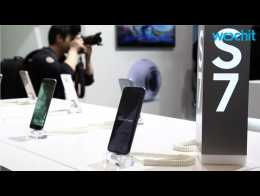
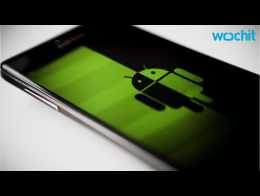
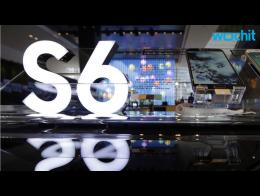
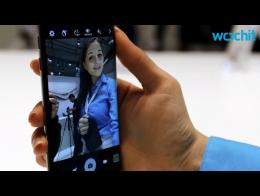
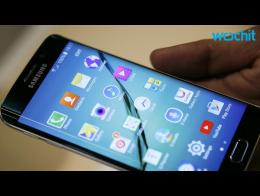
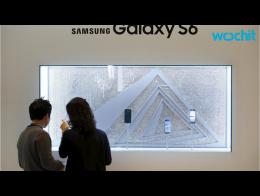
0 التعليقات :
إرسال تعليق